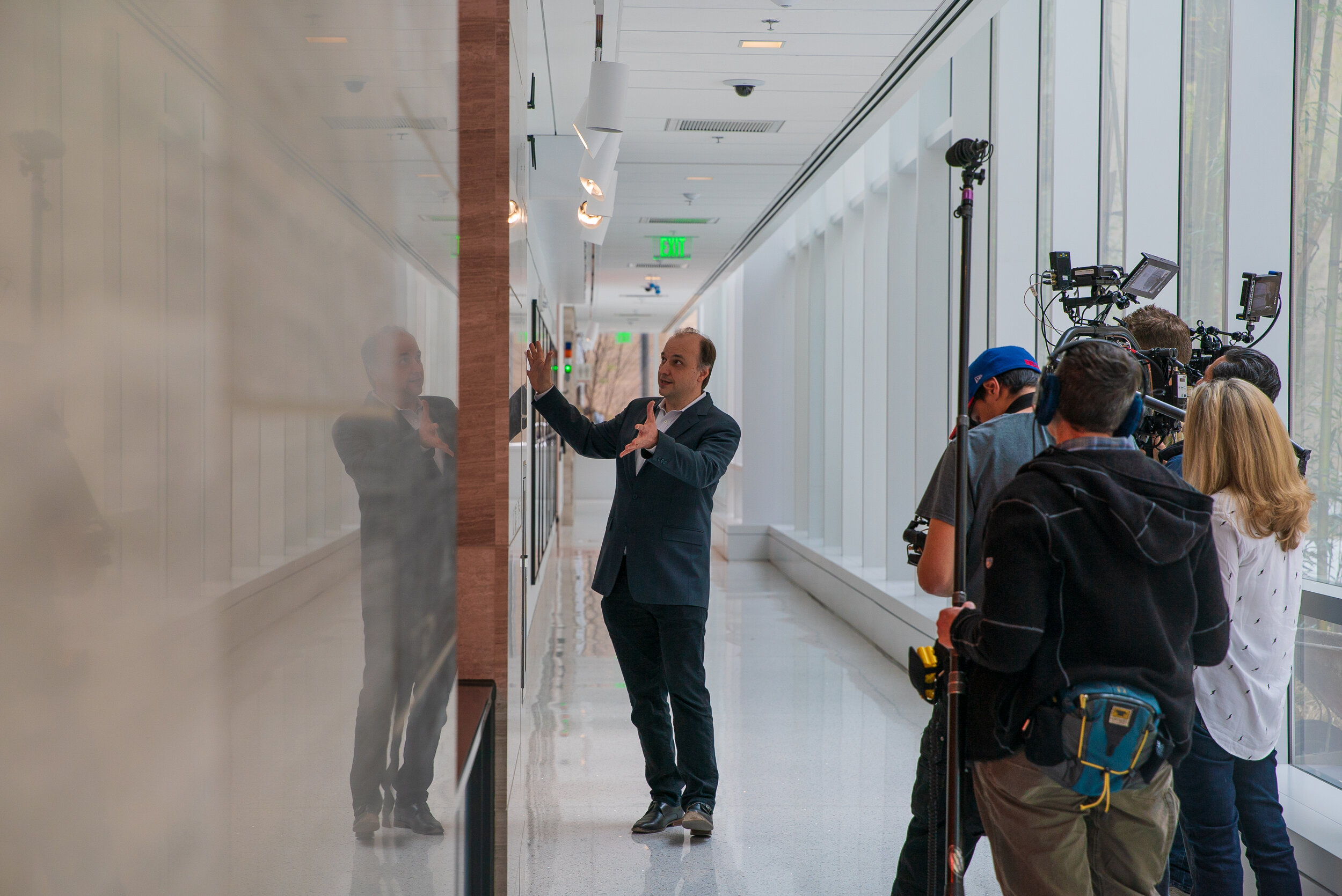VLADIMIR BULOVIC
Founding Director of MIT Nano
Professor of Engineering and Fariborz Maseeh (1990) Chair in Emerging Technology at MIT
Vlad paints a beautiful picture of using the sun’s energy to power the world. His vision is a future without plugs, without charging, and with ubiquitous energy for all. “Solar is the most scalable resource we have and most scalable technology from the perspective of you can cut it to size and deliver this much energy or that much energy, depending what people can afford.”
He directs the Organic and Nanostructured Electronics Laboratory, co-leads the MIT-Eni Solar Frontiers Center, leads the Tata GridEdge program, and is the Founding Director of MIT Nano. MIT's new 200,000 sqft nano-fabrication, nano-characterization, and prototyping facility opened in the summer of 2018. He has been awarded honors for his contribution to the commercialization of quantum dot technology and his contribution to the innovation of practically applied nanotechnologies. His innovations are in devices such as light-emitting diodes, lasers, photodetectors, and chemical sensors.
Vladimir is a founder of QD Vision, Inc. of Lexington MA, which is manufacturing quantum dot optoelectronic components; Kateeva, Inc. of Menlo Park CA, which is focused on the development of printed organic electronics; and Ubiquitous Energy, Inc., which is developing nanostructured solar technologies. These start-ups presently employ over 200 researchers in the U.S. and a similar number of employees abroad.
“One way to make solar cells less costly to install is to make them dramatically lighter.” He developed a photovoltaic (PV) cell that is so small and light that it can float on a soap bubble. His goal is to make the price of the solar cell so insignificant that it can be applied to any surface. His work is pure innovation, and our excitement for a future powered by his inventions was palpable during filming.
Among his other developments are solar panels made of flexible nanoparticles that can be rolled onto a roof like a carpet. This kind of innovation drives down the cost of solar panels because so much of the cost goes towards the installation. By eliminating this expense, Vlad helps make solar energy accessible to more of us.
“Quantum dot materials or so-called Perovskyte materials that recently emerged, they're all extremely thin. About 100th the thickness of your hair is all the material you need. These nano-structured films are really good at absorbing light, and as a result, can be made into really good solar cells. That is the opportunity to make an extremely lightweight solar cell because now you can take the cell and you can put it on a piece of paper, on a piece of plastic, on a Saran Wrap.”
“We can actually generate on the order of 150 times more power per weight than a typical silicon module does.”

